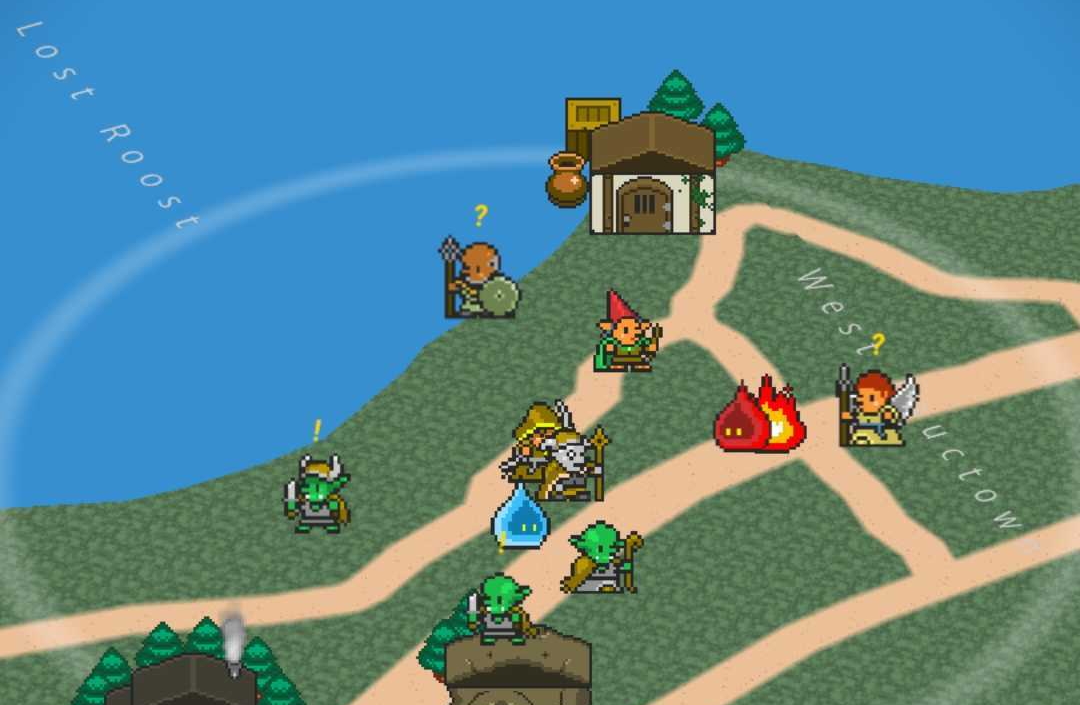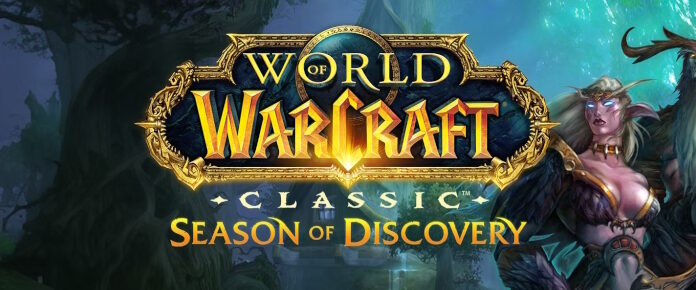
Twice now I have suggested a theoretical Earthbound ARG, and a central idea of such a game would be having a chosen safe spot for each player to “live,” play, and build on. It would grant bonuses so that more traditional gameplay could occur in a safe spot, while exploration would still be desirable. As players gathered, more monsters would spawn.
But unbeknownst to me, that game already existed in 2018. It’s called Orna: The GPS RPG. It’s not exactly Earthbound-esque, though Odie, the former lone developer, has mentioned it as an influence.
I’d admittedly heard of the game before and even mentioned it as a potential refuge for soon-to-be-homeless Harry Potter: Wizards Unite players, but the simple graphics, one-man dev team, and initial North America only release was a turn-off. I’m always looking for fun location-based games, but they’re not easy to do right. Between safety issues even for big teams, COVID, and niche appeal, it’s an easy genre to do wrong, and in harmful ways. Many are too gimmicky, especially in terms of using your camera. Others have poor monetization. Many are just downright unsafe to play in public.
As I’ve had some issues with Niantic in terms of corporate responsibility and support staff, I was looking for something new to try, so I decided to take the plunge into Orna, and while I have been thoroughly enjoying myself, I am hesitant to share this gem of a game.
Growing up in a Fallen world
Orna isn’t an IP-based MMOARG, unlike what we tend to see from mainstream devs. The lore is pretty simple: Something big happened, the races of the world were set against each other, factions formed, and now you and other players are trying to fix it. There’s quite a bit of a Norse influence, as well as Arthurian mythos, but the classes feel very 1990s Squaresoft, so many gamers probably have an idea of how a Dragonknight or Nekromancer will play.
As you can see, the graphics are pretty simple. Combat is turn-based, and a lot of it is asynchronous when dealing with other players. After starting the game, you choose Warrior, Thief, or Mage for your class, and after several levels and Orn (a secondary but non-premium currency), you choose another class, including hybrids. Repeat until tier 10. There are also specializations that do things like increase view distance, give more skill slots, allow dual-wielding of staves, and so forth, which can feel very powerful, but I’d advise you not to pick one up until you hit the more expensive specializations as the first one is free (they’re not tree-based like the classes).
Orna ends up feeling like a mobile, old-school Final Fantasy game, though more like Mystic Quest since you can see the monsters (stop judging me, Eliot). However, skills you learn from other classes or purchase in-game (there’s no premium currency) can be used when you change classes, as long as you have the class/skills to wield required weapons and the mana to afford it. It brings the old-school FF feel more into the early 2000s of classless MMOs, potentially giving not only longevity to the game but high customization.
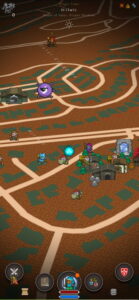
The big draw, however, is that once you’ve chosen your class, you can choose a physical location as your “Origin Town,” granting you a 10% bonus to all stats and the ability to build a kind of base of operations. If you want, you can change this location, and whatever structures you built within it come with you. What’s nice is that no one can take your town from you, and you can even prevent other players from using the structures. The ability to place them virtually anywhere can help obscure your RL home (if you select your home as your origin town), and the in-game map will not reveal the owner’s name or make your home vulnerable to the PvP system. Territory control is a thing, but your origin town is 100% separate from that.
For solo players and people who hate walking, one very nice feature is that there will always be monsters for you to kill. I can’t stress that aspect of the game enough for new, potential players familiar with other location-based games: Unlike nearly every other location-based game I’ve played, Orna lets me choose to play from my home all day and night if I wanted to.
How long’s the respawn? Instantaneous. I actually have not mentioned the game at all to one Pokemon GO friend as it’s already a struggle to get her to move before she’s cleared an area. Orna will literally not allow this to happen, so for good or ill, you would never have to leave home looking for spawns. You can just stay home, grind, and build a town. And that’s before you bring in other players.
MMO/multiplayerness
Going by my previously used (but also admittedly loose) MMO criteria list, I’d say Orna is a solid 8/8 on the scale.
- Servers that don’t require or display a population size to start or cap out at. Lobby-based games are disqualified if the lobby doesn’t meet the same criteria as the “core” part of the game. Check! (to a degree)
- An in-game communication system that allows for conversation, not just reactions. Check!
- Real-time interaction (for turn-based action, must be limited to seconds/minutes). Check!
- Avatar-based (text, 2-D, 3-D, etc.). Check!
- Environment is persistent and interactive. Check!
- The environment then leads to player-to-player interaction. Check!
- Must have AI to interact with as an integral part of the gameplay system. Check!
- Must have some sort of reward system. Check!
Now, admittedly, you aren’t going to log in and see a million actual players on-screen. They could theoretically be there, but you see only players you’re partied with, so no one’s going to be able to follow you home a la Pikmin Bloom. It is a shared world, though, as certain world items and monsters will disappear if someone takes them first, as will items in-store that have a limited supply.
The game is also often asynchronous for non-party combat, such as the PvP sparing options (AI takes control of another, real player’s character) and Kingdom Raids (asynchronous boss battles with damage shared among all participants), but if you physically play near another part member or use a “wayvessel” (teleporter) to move your character to another player’s area, you can play together in a party.
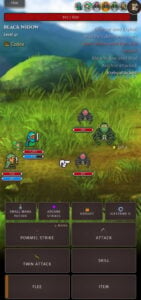 Party play makes the usual monsters, who participate in 1v1 battles with you normally (not excluding pets, which every class can use), turn into multi-monster battles. They’re still turn-based, so if that’s not your thing, maybe Orna isn’t for you, but combat is rather quick outside of bosses (especially the guild boss battles) and often brutal.
Party play makes the usual monsters, who participate in 1v1 battles with you normally (not excluding pets, which every class can use), turn into multi-monster battles. They’re still turn-based, so if that’s not your thing, maybe Orna isn’t for you, but combat is rather quick outside of bosses (especially the guild boss battles) and often brutal.
Basic leveling for the first 50 levels or so goes by fast, especially with current COVID bonuses (which while helpful are both minimal and almost unneeded given the overall drop generosity). After that, you’ll probably need to pick up a few tricks from an arcanist, as some mobs are immune to physical attacks or certain elements. I’ll talk about this more later, but while you can build many of the functional structures in the game (each of which has a unique purpose), some do require going out into the world, though maybe you’re lucky and live near one. One friend lives near several shops and blacksmiths, while I have a single shop and a dungeon I can sometimes see.
Shops are important, as unlike in most old-school RPGs, you can’t just hoard potions forever. You’ll need to drink them to replenish HP and mana in a timely manner, though don’t worry too much about that as money comes very fast in the game.
Depending on what’s near you, you may even feel you don’t even need to leave the house, especially as you get to choose a origin town, vaguely similar to what The Walking Dead: Our World lets you do, but more like the “Your Sanctuary” feature I suggested in a theoretical Earthbound ARG: a player-chosen area that makes you more powerful while you’re within it, encouraging safe, stationary play. And as I suggested for that game, Orna already implemented additional spawns for players based on the number of people playing in an area, which encourages social play and gathering.
As I mentioned, your origin town isn’t marked on the map, and unlike Pokemon GO gyms, your location isn’t broadcasted for all to see. There are also no references to real-world areas, so teleporting to an origin town won’t even reveal what country the player has set up in. Yes, there is still a turf war option, but you don’t fight over premium currency and your designated home isn’t shown and cannot be taken. Benefits like 9 orns per day are practically nothing, as a single battle as a new player can bring much, much more. It’s more about bragging rights or getting a 5% stat bonus in that area.
Having other players really opens up the game. You can solo boss mobs your level if you want to; no one will ever know you’re there. If you die or run from a battle on the overworld, you have to wait 5 minutes to try again (dungeons, which are a series of battles without having to navigate a map, work differently). Death is painless and simply requires you to regain health (mana stays the same as whatever you died with), so you can theoretically go into a fight, blast off a high-level spell, die, drink a small potion to get back a little health, and then repeat on the next monster until you eventually kill something.
However, having other players means tanks and healers are a thing. Debuffs help more people than your pet. Someone else can deal damage as you chug potions to save your life. Better yet, levels don’t matter as much. Yes, being within 25 levels of each other grants a party XP bonus, but I was 110 levels higher than my friend when she started Orna. We partied up, and I slaughtered all the slimes and spiders that spawned near us (spawns are level-based, so you won’t see ultra-high level stuff as a lowbie), and she still leveled at the dizzyingly rapid pace I had when I started the game.
You don’t need to physically play with others, though. Between having joined a random party thanks to region chat (which apparently includes 4 states in the south-western USA), and using the “Kingdom finder” (guild finder), I often log in with a lot of extra XP or even an additional level. Teleporting to other players’ towns can help me find shops and a different variety of spawns so I never have to leave the house to play. PvP sparring means I can test my character out against others without confrontation IRL or via game chat.
If a lot of this sounds like stuff I can imagine our readers may do in a regular MMO, though obviously with more simple graphics. It’s why Orna really feels like a full MMOARG compared to many of its competitors. However, Orna isn’t a perfect game, especially if we consider some of the reasons other location-based games started off well.
When geo-location means staying at home
Aside from being better at avoiding stalking issues, the game isn’t objectively better than many other titles. It’s just different. The PvP is less meaningful for territory control in my mind, and it isn’t monetized. For some, that may mean it’s less appealing and thus less worthy of their time. In my mind, that makes the game safer, but I’m sure there might be some people who could get into a tiff about it if the game had a large enough playerbase.
And that’s the “problem.” The game isn’t popular enough for that to happen. Due to the game’s age, I see “ghosts” of old players (indicating inactivity in the area), but I don’t think I’ve ever noticed other people playing the game. While the map has tons of NPCs, shops, mobs, treasure, dungeons, world bosses, and even a fishing minigame, the player population feels dead if you don’t watch the “regional” chat channels, which span several states.
In fact, a lot of the things that work in Orna probably do so because the population is on the smaller side, and since it was made by a one-man team, the scope is appropriate for now. Territory battles in the areas I’ve visited are incredibly slow. New players has motivation to get up in levels and take what’s unused, but once they get tired of grinding to customize their characters, they may leave too, resulting in the next new player’s motivation to claim unguarded turf.
I could complain about how a bigger population would attract issues with people driving and playing, abusing GPS spoofing to steal world items or take territory, and people getting into fights over currency gains that could easily be won through a newbie battle, but the fact of the matter is that those might only happen if the game were to explode into popularity, at which point there’d need to be many, many more devs. It’s why I was a bit hesitant (and, admittedly, selfish) about sharing the game.
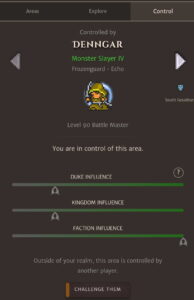 That being said, the smaller scope is probably why I also let some design issues slide in Orna when compared to the mainstream geo-location games. The differences are night and day. In fact, the ethics are too.
That being said, the smaller scope is probably why I also let some design issues slide in Orna when compared to the mainstream geo-location games. The differences are night and day. In fact, the ethics are too.
The stakes for players often feel much lower, especially because there’s no secondary premium currency to fight over or obfuscate real values. The gambling system is about as gambly as popping a quarter into an arcade machine to try to beat a level (think Pokemon GO raids as the main money maker; no incubators/lockboxes). The players aren’t asked to surrender data for advertising, use camera gimmicks that might draw unwanted attention to them, stand in specific areas that might create real world problems, or record images to send to a company who will use them for god-knows-what.
But the other downside, especially for me, is the lack of motivation to go outside and interact with new people. Mobs spawn constantly, which is fun but also highly addicting. Contrast this with Pokemon GO, which often has low spawns near homes to encourage you to move or has add-ons that do the capturing for you, allowing you to focus less on the game and more on walking. Yes, there are places with high-Pokemon density, but at that point, especially with the auto-catching device, they become both a hotspot for hardcores and a good socializing center for casuals.
Orna lacks both an external device for automation and spawns so much stuff that most players probably won’t even want to move. The exceptions (in both Orna and Pokemon GO), of course, are usually for new players who are still learning and occasionally veterans who don’t have the means of getting/moving to a specific target. However, because of both the dense spawns and teleportation, plus brutal combat for players not paying attention, my friend and I have felt like the game requires a lot of attention that makes walking and playing Orna hazardous. While we’re outside, it feels better/safer to check-in than be constantly active.
As the combat is menu-based, it’s nearly impossible to tell who, if anyone, is playing. The previously described world items (like chests and stone) that disappear if someone takes them may hint that someone is nearby, but you can’t tell. Dungeons and bosses, which other games might force as multiplayer features, don’t even give the option to join with nearby players. Orna very much feels like a game that relies on previous connections or social media to find others. It’s not that different from playing Pokemon GO in a small town, but it feels more like a multiplayer optional game, at least during COVID.
Ultimately, it’s fun if you want something light at home or to pop open while in line at the store, so I can recommend it to most MMO fans, but people who want a game that asks them to get active may not get much from the game.
 Massively OP’s Andrew Ross is an admitted Pokemon geek and expert ARG-watcher. Nobody knows Niantic and Nintendo like he does! His Massively on the Go column covers Pokemon Go as well as other mobile MMOs and augmented reality titles!
Massively OP’s Andrew Ross is an admitted Pokemon geek and expert ARG-watcher. Nobody knows Niantic and Nintendo like he does! His Massively on the Go column covers Pokemon Go as well as other mobile MMOs and augmented reality titles!

